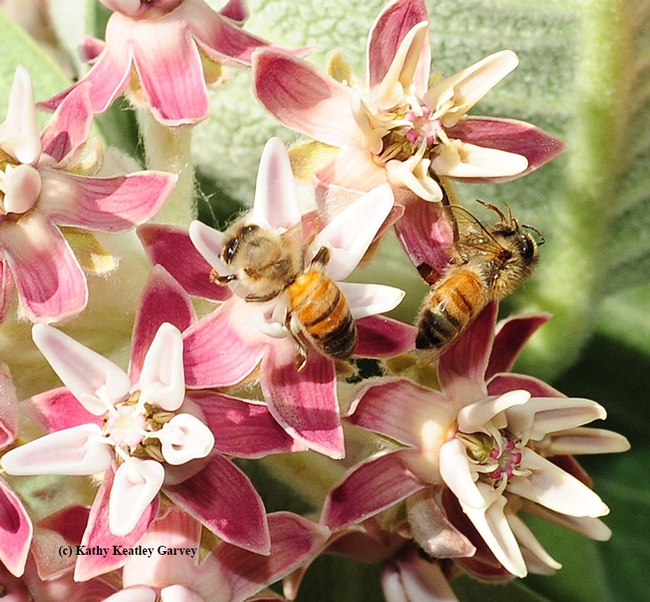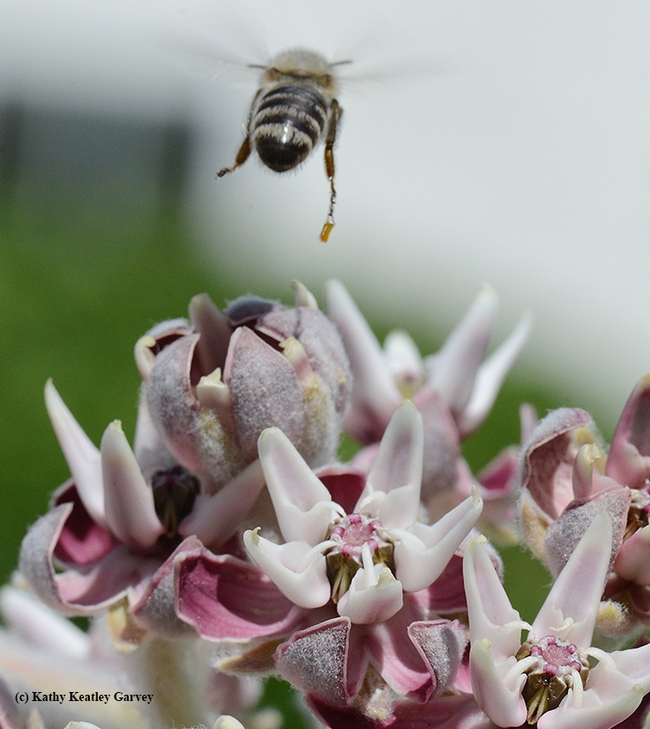How times change with the advancement of knowledge.
It's long been known that when honey bees—as well as other insects—get trapped in the milkweed's pollinia, or sticky mass of pollen, many perish when they are unable to free themselves.
So when we were perusing the book, ABC of Bee Culture, published in 1890 and written by noted beekeeping innovator/entrepreneur A. I. Root (1839-1923) of Ohio--with information “gleaned from the experience of thousands of beekeepers from all over the land”--we came across a surprising recommendation.
The surprising recommendation: If you want to kill off bees where they are not wanted, plant milkweed. In one reference, milkweed is described as a “useless weed.” (Actually, it's the only larval host of the monarch butterfly and without milkweed, no monarchs.)
Excerpt from ABC of Bee Culture:
"Milkweed (Asclepias cornuti). This plant is celebrated, not for the honey it produces, although it doubtless furnishes a good supply, but for its queer, winged masses of pollen, which attach themselves to the bees's feet and cause him to become a cripple, if not to lose his life. Every fall, we have many inquiries from new subscribers in regard to this queer phenomenon. Some think it is a parasite, others a protuberance growing on the bee's foot, and others, a winged insect enemy of the bee.” (Note that foragers are referred to as male, but all foragers are female.)
“It is the same that Prof. Riley alluded to when he recommended that the milkweed be planted to kill off the bees when they become troublesome to the fruit grower. The folly of such advice—think of the labor and expense of starting a plantation of useless weeds just to entrap honey bees---becomes more apparent when we learn that it is perhaps only the old and enfeebled bees that are unable to free themselves from those appendages, and hence the milkweed can scarcely be called an enemy. The appendage, it will be observed, looks like a pair of wings, and they attach themselves to the bee by a glutinous matter which quickly hardens so it is quite difficult to remove, if not done when it is first attached.”
There's a wealth of information in the encyclopedic ABC of Bee Culture, even the 126-year-old edition, but planting milkweed to kill bees and describing milkweed a "useless weed" aren't two of them.
How times change with the advancement of knowledge.
(Editor's Note: The newest edition of the ABC of Bee Culture is The ABC and Xyz of Bee Culture: An Encyclopedia of Beekeeping, 40th Edition. It's published by the A. I. Root Co.)
Attached Images:

